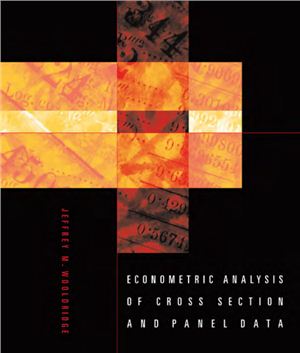The MIT Press – 2003, 777 pages
ISBN: 0262232332
This is the essential companion to Jeffrey Wooldridge's widely-used graduate text Econometric Analysis of Cross Section and Panel Data (MIT Press, 2001). Already established as a leading graduate econometrics text, the book offers an intuitive yet rigorous treatment of two methods used in econometric research, cross section and panel data techniques. The numerous end-of-chapter problems are an important component of the book, encouraging the student to use the analytical tools presented in the text. This manual contains answers to selected problems, new examples, and supplementary materials designed by the author. Users of the textbook will find the manual a necessary adjunct to the book.
Mode empirical research that can be ?tted into the classical linear model para- digm is becoming increasingly rare. For instance, it is now widely recognized that a student doing research in applied time series analysis cannot get very far by ignoring recent advances in estimation and testing in models with trending and strongly de- pendent processes. This theory takes a very di¤erent direction from the classical lin- ear model than does cross section or panel data analysis. Hamilton’s (1994) time series text demonstrates this di¤erence unequivocally.
Books intended to cover an econometric sequence of a year or more, beginning with the classical linear model, tend to treat advanced topics in cross section and panel data analysis as direct applications or minor extensions of the classical linear model (if they are treated at all). Such treatment needlessly limits the scope of appli- cations and can result in poor econometric practice. The focus in such books on the algebra and geometry of econometrics is appropriate for a ?rst-semester course, but it results in oversimpli?cation or sloppiness in stating assumptions. Approaches to estimation that are acceptable under the ?xed regressor paradigm so prominent in the classical linear model can lead one badly astray under practically important depar- tures from the ?xed regressor assumption.
Books on ‘‘advanced’’ econometrics tend to be high-level treatments that focus on general approaches to estimation, thereby attempting to cover all data con?gurations— including cross section, panel data, and time series—in one framework, without giving special attention to any. A hallmark of such books is that detailed regularity con- ditions are treated on par with the practically more important assumptions that have economic content. This is a burden for students leaing about cross section and panel data methods, especially those who are empirically oriented: de?nitions and limit theorems about dependent processes need to be included among the regularity
conditions in order to cover time series applications.
ISBN: 0262232332
This is the essential companion to Jeffrey Wooldridge's widely-used graduate text Econometric Analysis of Cross Section and Panel Data (MIT Press, 2001). Already established as a leading graduate econometrics text, the book offers an intuitive yet rigorous treatment of two methods used in econometric research, cross section and panel data techniques. The numerous end-of-chapter problems are an important component of the book, encouraging the student to use the analytical tools presented in the text. This manual contains answers to selected problems, new examples, and supplementary materials designed by the author. Users of the textbook will find the manual a necessary adjunct to the book.
Mode empirical research that can be ?tted into the classical linear model para- digm is becoming increasingly rare. For instance, it is now widely recognized that a student doing research in applied time series analysis cannot get very far by ignoring recent advances in estimation and testing in models with trending and strongly de- pendent processes. This theory takes a very di¤erent direction from the classical lin- ear model than does cross section or panel data analysis. Hamilton’s (1994) time series text demonstrates this di¤erence unequivocally.
Books intended to cover an econometric sequence of a year or more, beginning with the classical linear model, tend to treat advanced topics in cross section and panel data analysis as direct applications or minor extensions of the classical linear model (if they are treated at all). Such treatment needlessly limits the scope of appli- cations and can result in poor econometric practice. The focus in such books on the algebra and geometry of econometrics is appropriate for a ?rst-semester course, but it results in oversimpli?cation or sloppiness in stating assumptions. Approaches to estimation that are acceptable under the ?xed regressor paradigm so prominent in the classical linear model can lead one badly astray under practically important depar- tures from the ?xed regressor assumption.
Books on ‘‘advanced’’ econometrics tend to be high-level treatments that focus on general approaches to estimation, thereby attempting to cover all data con?gurations— including cross section, panel data, and time series—in one framework, without giving special attention to any. A hallmark of such books is that detailed regularity con- ditions are treated on par with the practically more important assumptions that have economic content. This is a burden for students leaing about cross section and panel data methods, especially those who are empirically oriented: de?nitions and limit theorems about dependent processes need to be included among the regularity
conditions in order to cover time series applications.

